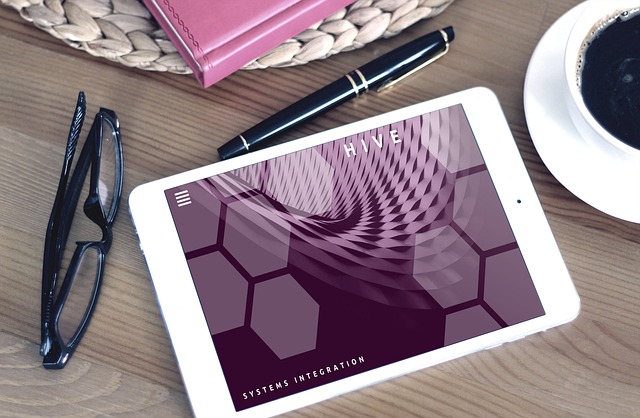In the digital era, AI is transforming commercial landscaping with its data-driven efficiency. AI technologies analyze datasets for precise mapping, irrigation optimization, pest prediction, and real-time cleanliness scoring. This enhances outdoor spaces' aesthetics and maintenance, ensuring resource effectiveness. AI algorithms also recommend plant species suitable for local climates. Pest control systems use advanced algorithms, machine learning, and computer vision to predict and deploy targeted interventions, minimizing chemical use. The success of commercial landscaping, particularly with AI pest control, relies on AI public space cleanliness scoring algorithms that monitor and assess hygiene levels through sensors, cameras, and drone data, enabling dynamic, adaptive management for optimal cleanliness, safety, and aesthetics.
“Revolutionize commercial landscaping with AI-powered pest control: a game-changing approach to maintaining pristine public spaces. This article explores how artificial intelligence is transforming urban environments, from understanding its basic role and benefits to delving into the technologies behind AI-driven pest management systems.
We’ll uncover the development of algorithms designed to detect and mitigate pests, focusing on the impact of these innovations on public space cleanliness. By examining AI public space cleanliness scoring algorithms, we highlight the future of efficient, eco-friendly pest control.”
- Understanding AI's Role in Commercial Landscaping: The Basics and Benefits
- Developing AI-Powered Pest Control Systems: Algorithms and Technologies
- Measuring Success: AI Public Space Cleanliness Scoring Algorithms in Action
Understanding AI's Role in Commercial Landscaping: The Basics and Benefits

In today’s digital era, Artificial Intelligence (AI) is transforming various industries, and commercial landscaping is no exception. AI-powered solutions offer a new level of efficiency and precision in maintaining public spaces and ensuring optimal cleanliness. By leveraging machine learning algorithms, these systems can analyze vast amounts of data to create detailed maps and plans for landscaping areas. This includes identifying suitable plant species based on local climates and conditions, optimizing irrigation systems to reduce water wastage, and predicting pest infestations before they occur.
The benefits of AI in commercial landscaping are significant. It enhances overall aesthetics by creating well-designed outdoor spaces that cater to various user needs. Moreover, AI algorithms can monitor and score public space cleanliness in real time, enabling quick responses to littering or maintenance issues. This data-driven approach ensures resources are allocated effectively, promoting a cleaner and more enjoyable environment for all users.
Developing AI-Powered Pest Control Systems: Algorithms and Technologies

The development of AI-powered pest control systems is revolutionizing the way we maintain public spaces and ensure cleanliness. These innovative solutions leverage advanced algorithms, machine learning, and computer vision to identify and manage pests effectively. By analyzing vast amounts of data, including environmental factors, historical pest activity, and real-time sensor readings, these systems can predict pest outbreaks and tailor targeted interventions.
AI technologies such as image recognition and behavioral modeling enable automated detection of pest species in public spaces. Scoring algorithms assess the risk levels of different areas based on various parameters like debris accumulation, moisture content, and temperature, allowing for efficient deployment of control measures. This data-driven approach optimizes pest management practices, reduces chemical usage, and promotes a more sustainable and eco-friendly approach to maintaining clean and healthy environments in public spaces.
Measuring Success: AI Public Space Cleanliness Scoring Algorithms in Action

Measuring success in commercial landscaping, particularly in AI-powered pest control, involves employing innovative techniques like AI public space cleanliness scoring algorithms. These algorithms meticulously assess and rate the hygiene levels of public spaces, parks, and urban areas. By analyzing real-time data from various sensors, cameras, and drone footage, they identify contaminated zones, track pest populations, and monitor the effectiveness of cleaning efforts. This data-driven approach enables efficient resource allocation and proactive measures to maintain optimal cleanliness standards.
The algorithms are trained on vast datasets encompassing visual cues, odor patterns, and environmental conditions known to indicate pest activity and hygiene levels. They learn to detect subtle variations in space cleanliness, from minor litter accumulations to severe pest infestations. This enables them to provide actionable insights to landscaping teams, who can then employ targeted AI-guided interventions. The continuous monitoring and scoring facilitate a dynamic landscape management system that adapts to evolving environmental conditions, ensuring commercial spaces remain clean, safe, and aesthetically pleasing.
The integration of AI in commercial landscaping, particularly through AI-powered pest control systems and advanced public space cleanliness scoring algorithms, represents a significant leap forward. This technology not only enhances efficiency and accuracy but also contributes to healthier environments and improved urban living. As AI continues to evolve, its role in shaping sustainable and smart cities will become increasingly indispensable, paving the way for a future where landscapes are meticulously maintained and public spaces are consistently pristine.
